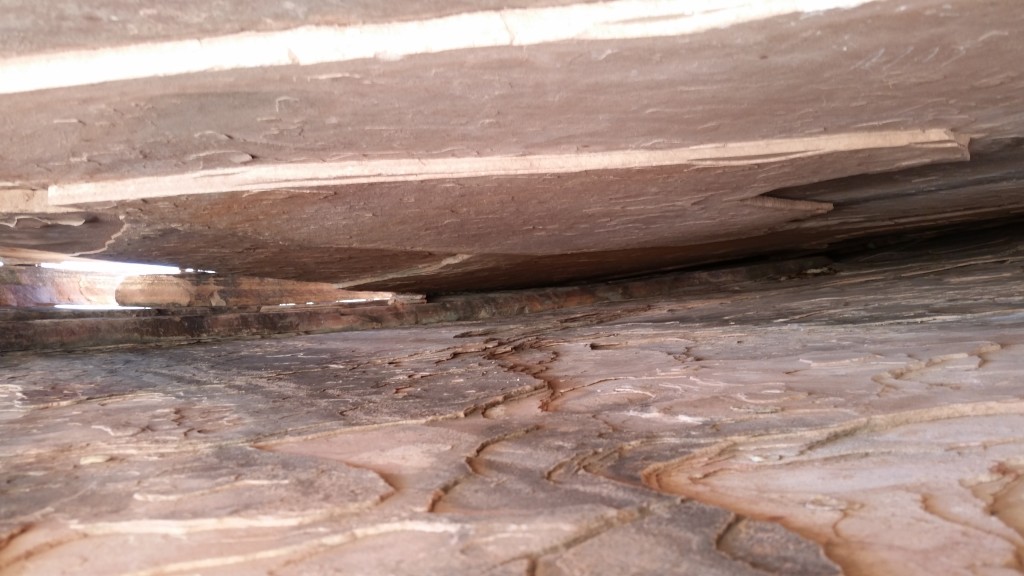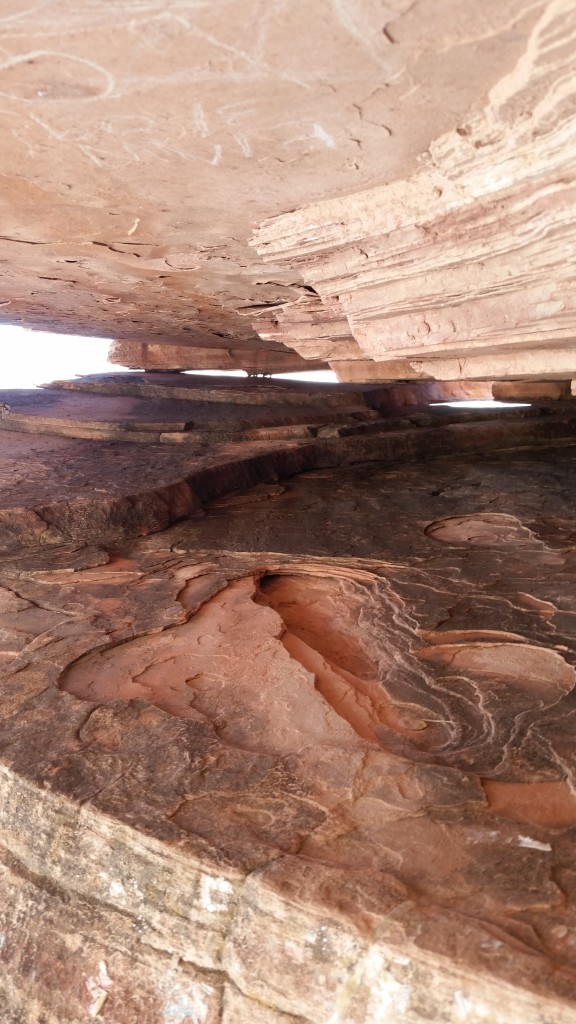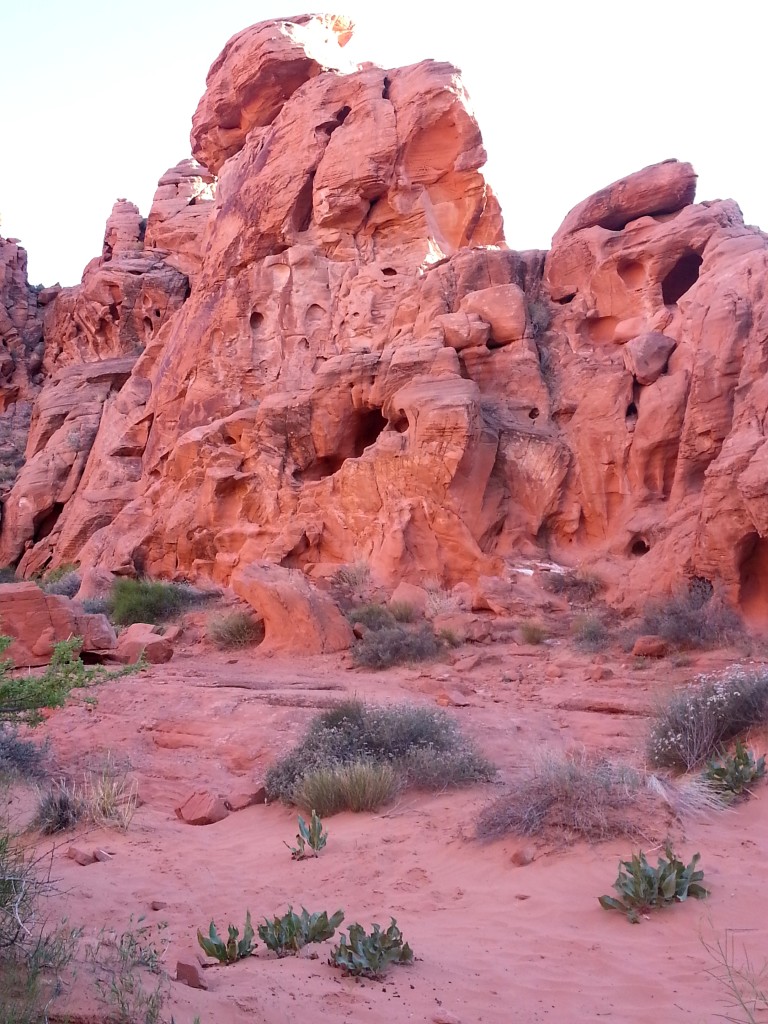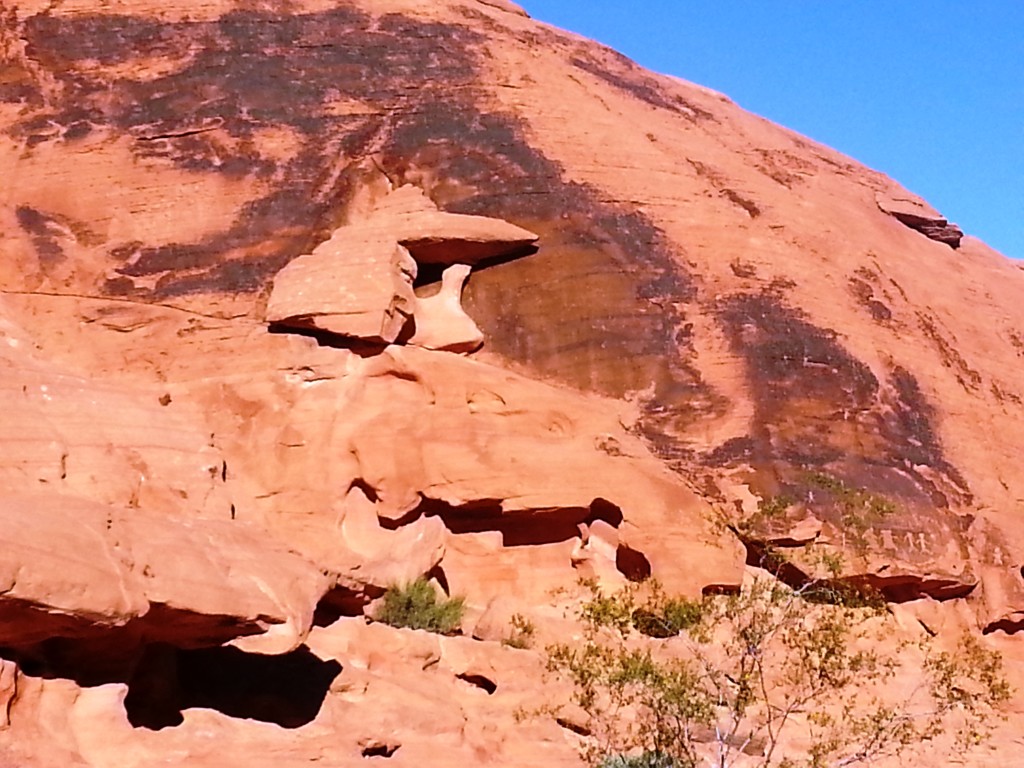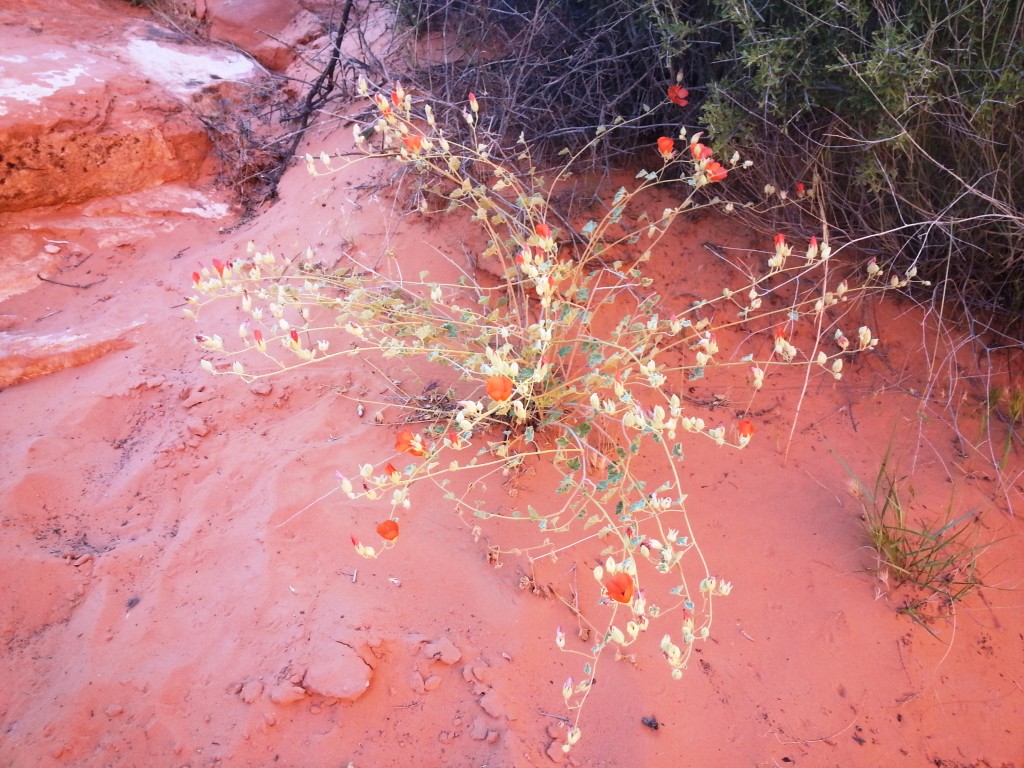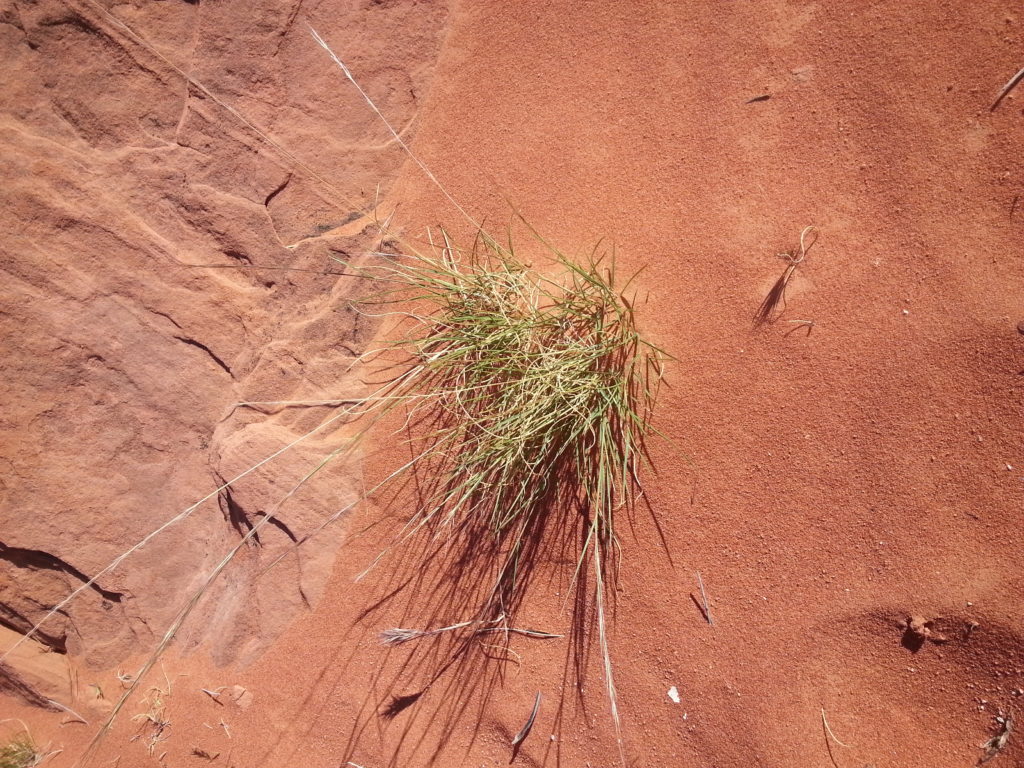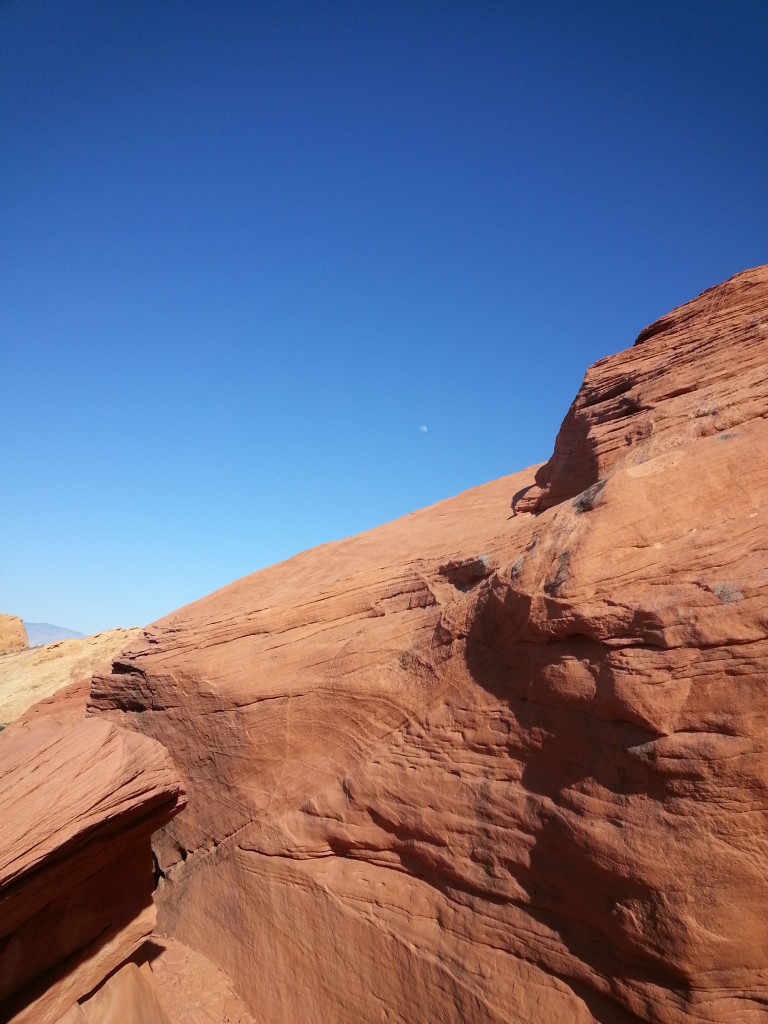What a strange and beautiful desert. I have always liked the high desert Southwest, but this place is just spectacular and is one of Nevada’s oldest state park. Characterized by red, pink and white sandstone rock that has been eroded into strange and wonderful shapes, these ancient petrified sand dunes contain petroglyphs, beautiful plants and many animals that hide away during the day, rarely to be seen by a fleeting visitor.
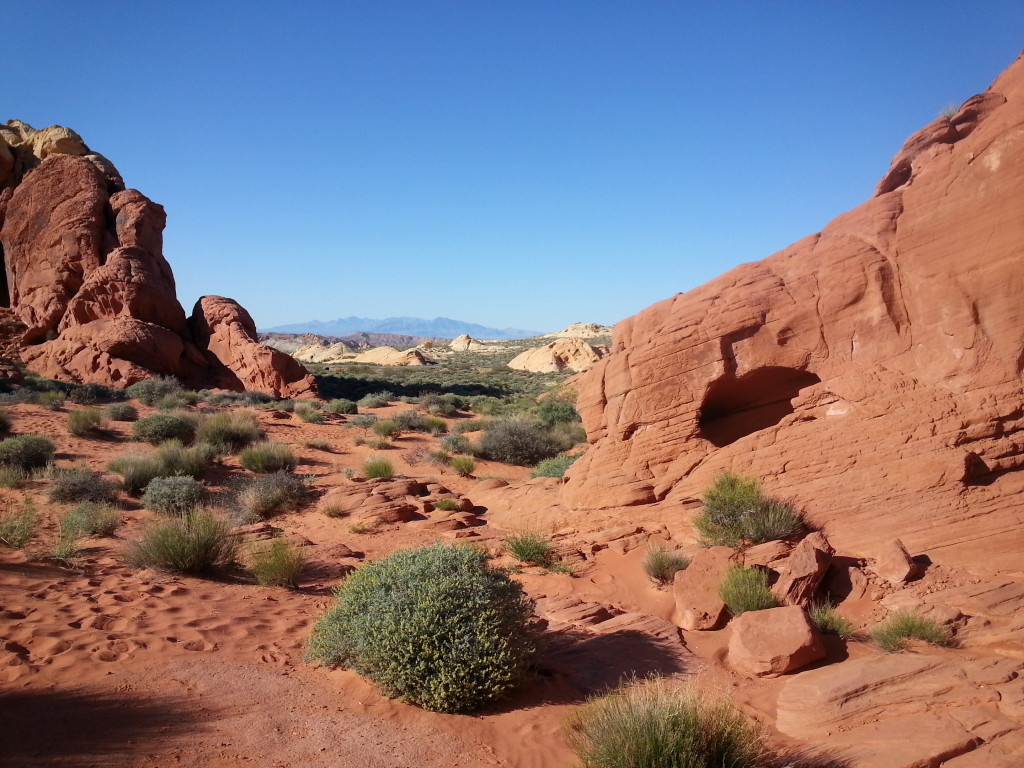 Many millions of years ago, this place used to be at the bottom of an ocean, and when the valley floor endured tectonic uplifts and volcanic action the water receded and it became a vast desert. Great sand dunes rose upward and through the action of compaction became sandstone frozen in time. Subsequent water flows containing iron oxide and many other minerals painted these rocks beautiful hues of red, pink and purple. And the fine, pink, soft sand grains at the bottom of the rocks, where erosion has finally deposited them, is a testament to what those sand dunes once felt like.
Many millions of years ago, this place used to be at the bottom of an ocean, and when the valley floor endured tectonic uplifts and volcanic action the water receded and it became a vast desert. Great sand dunes rose upward and through the action of compaction became sandstone frozen in time. Subsequent water flows containing iron oxide and many other minerals painted these rocks beautiful hues of red, pink and purple. And the fine, pink, soft sand grains at the bottom of the rocks, where erosion has finally deposited them, is a testament to what those sand dunes once felt like.
It only gets 4 inches of rain a year and temperatures in summer go well over 100 degrees, so the best time to visit is in spring and fall. Being a plant and flower nut myself, I was thrilled to have visited in spring. Every shrub, perennial and annual plant was alive with a spectacular show of blooms. It was hard to focus on anything at first. So many beautiful things to see in all directions!
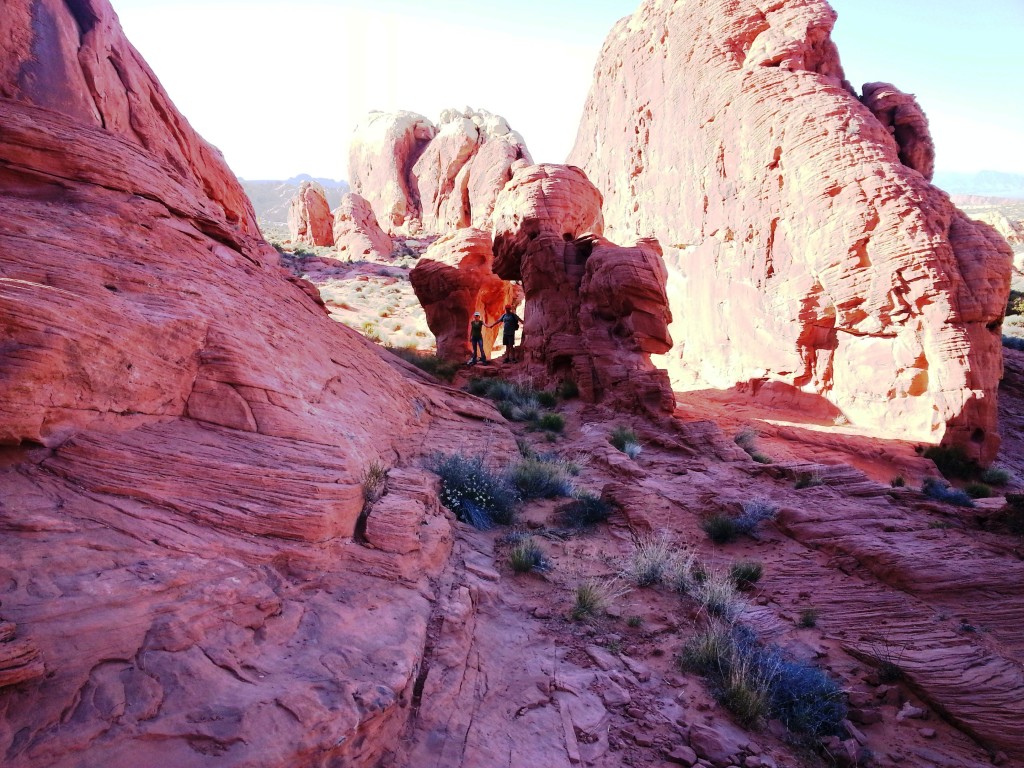 Huge alien looking rock formations were everywhere.
Huge alien looking rock formations were everywhere.
pathways were littered with stunning Southwestern tough-as-nails plants, in their spring blooming glory.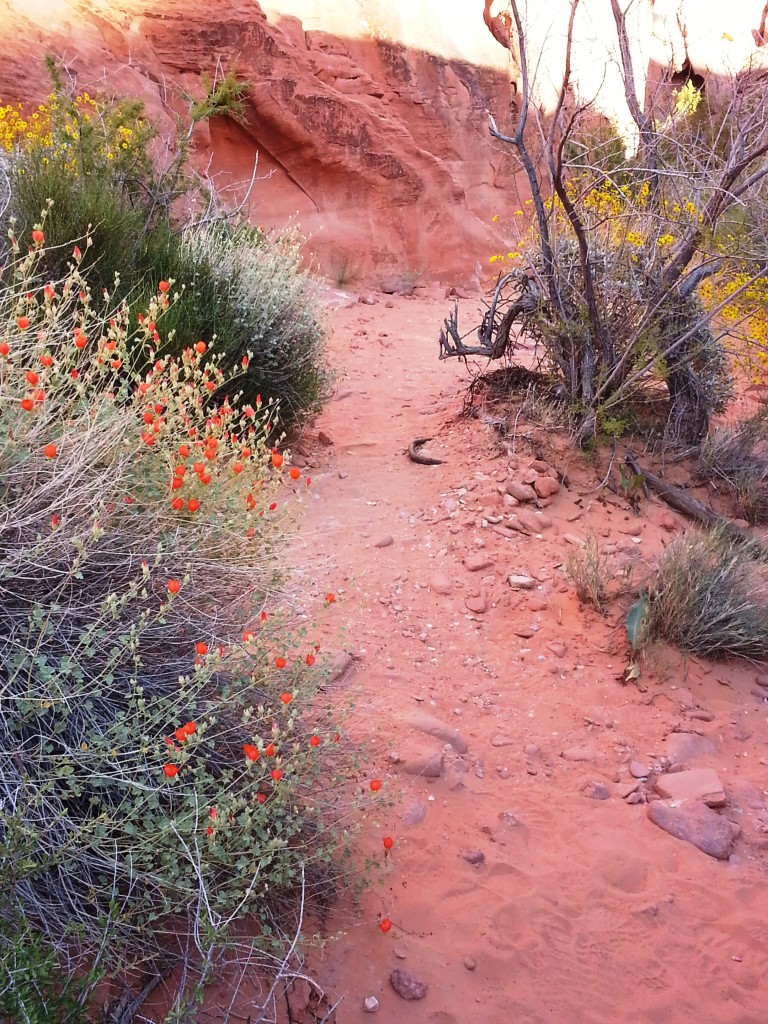
In this dry desert landscape plants found ways to survive and thrive.
Brittle brush was blooming everywhere! Amazingly it is a member of the sunflower family.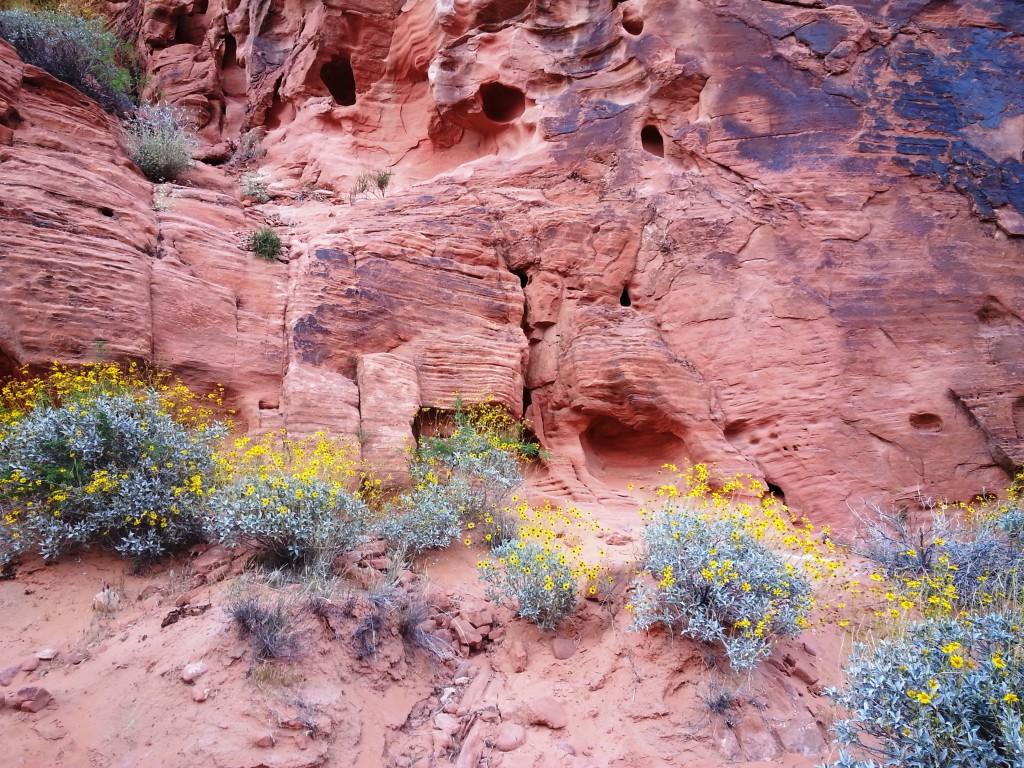
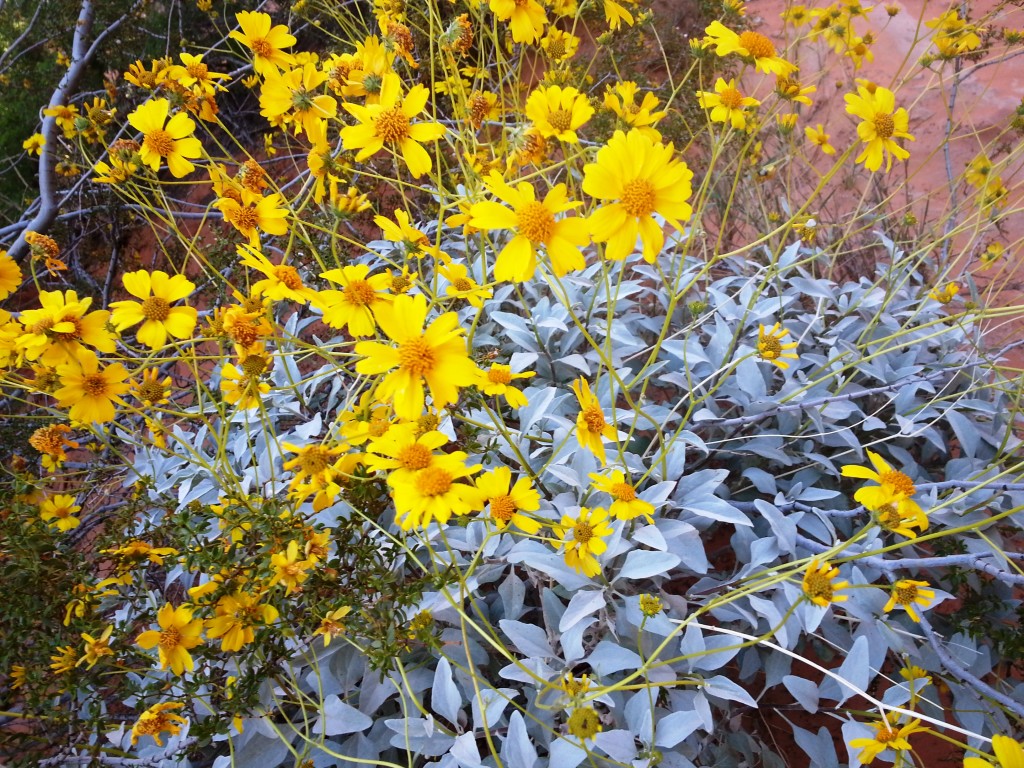 Indigo bush looked so beautiful against the pink sands.
Indigo bush looked so beautiful against the pink sands.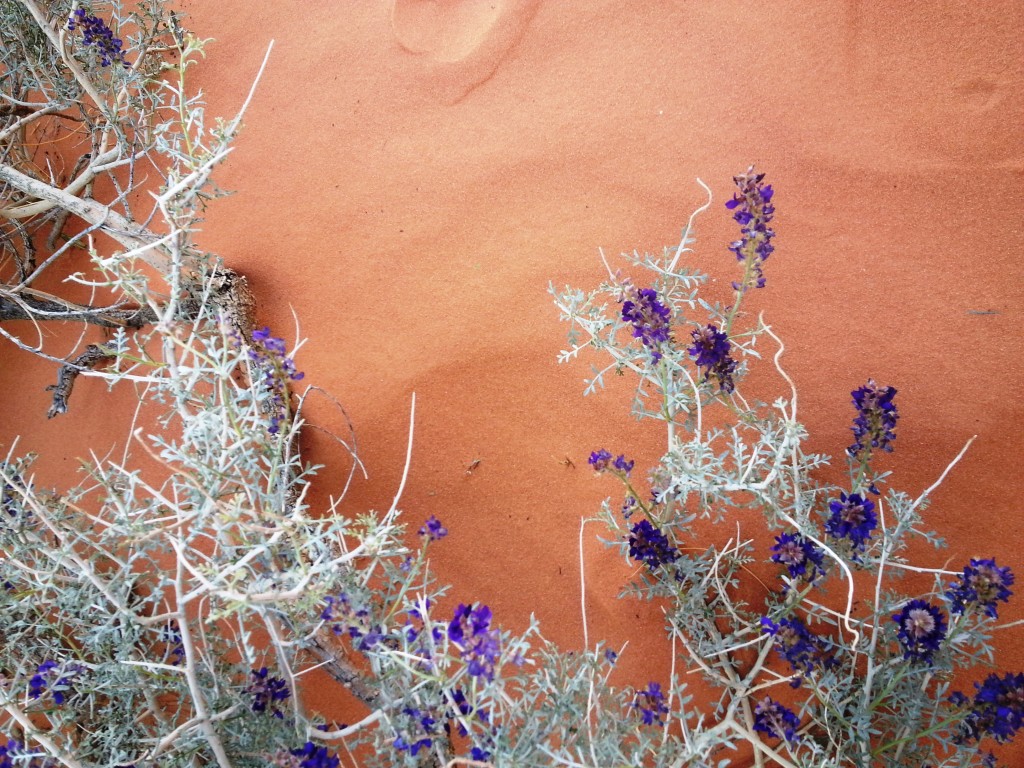
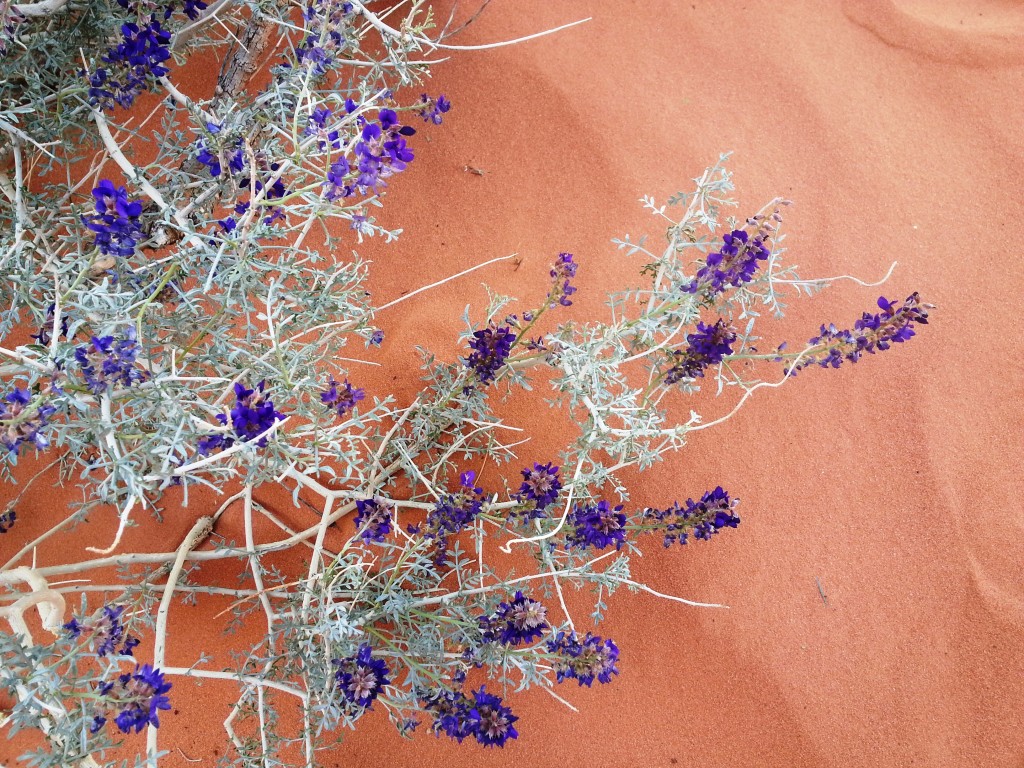 Beautiful plants springing out of bare rock and sand whose flowers matched the color of the sand.
Beautiful plants springing out of bare rock and sand whose flowers matched the color of the sand.
One of the most intriguing plants was the Bladder sage, which sports purple flowers that develop into balloon-like seeds.
Desert mallow, which grows in my own garden was thriving here too! So nice to see an old friend here. Not a picky plant, it will squeeze itself between tight rocks……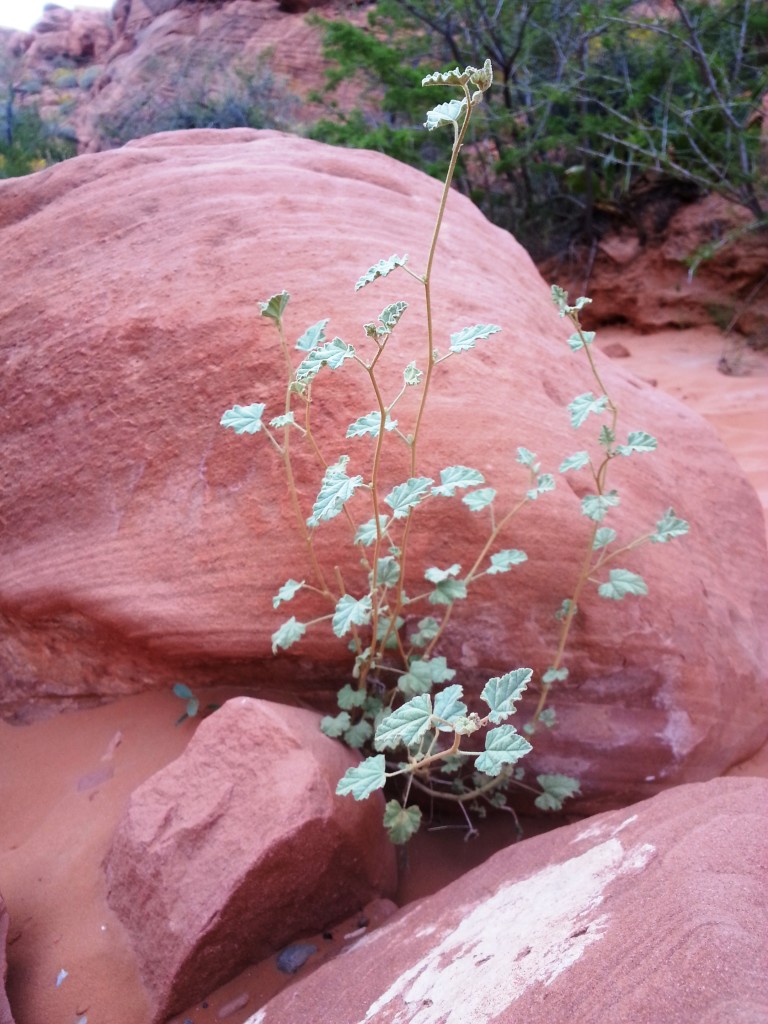 or just grow in loose, soft sand.
or just grow in loose, soft sand.
And last but certainly not least the Creosote bush.
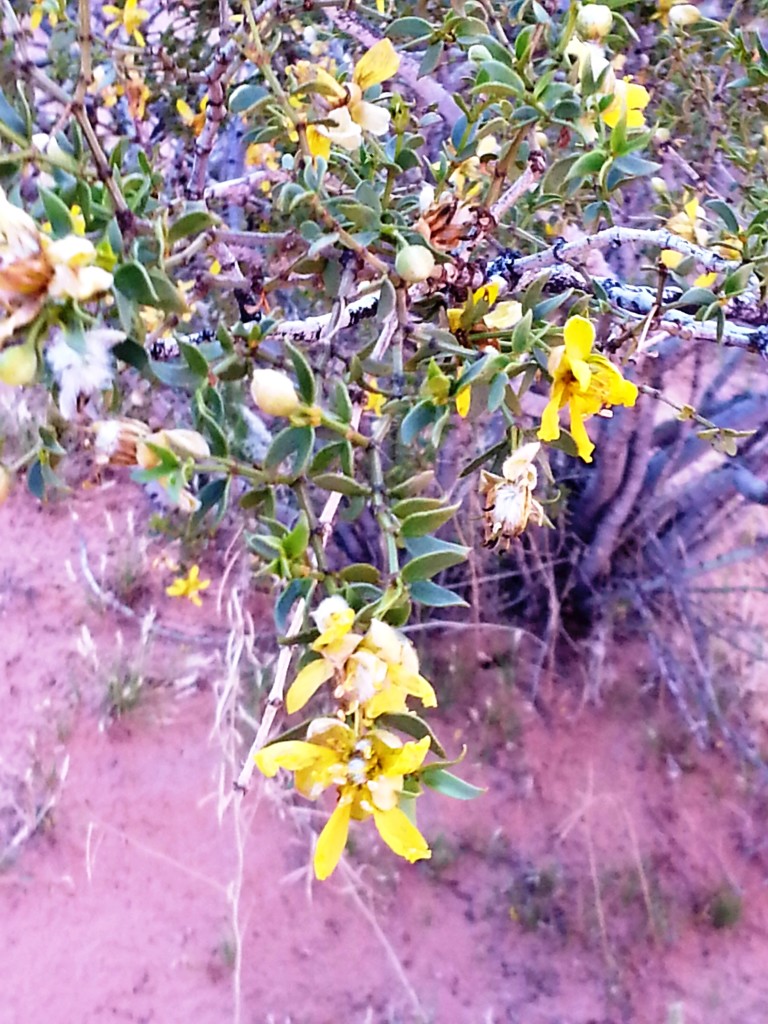 It is an important, widely available desert plant providing food, shelter, nesting and roosting space for many desert dwellers including the desert tortoise.
It is an important, widely available desert plant providing food, shelter, nesting and roosting space for many desert dwellers including the desert tortoise.
It left me speechless, this place. A dry desert where you wonder how these plants are able to survive without any water it seems.
That is until you dig about an inch down into the sand and find the sand damp with lingering moisture. This place is full of beauty and secrets.

